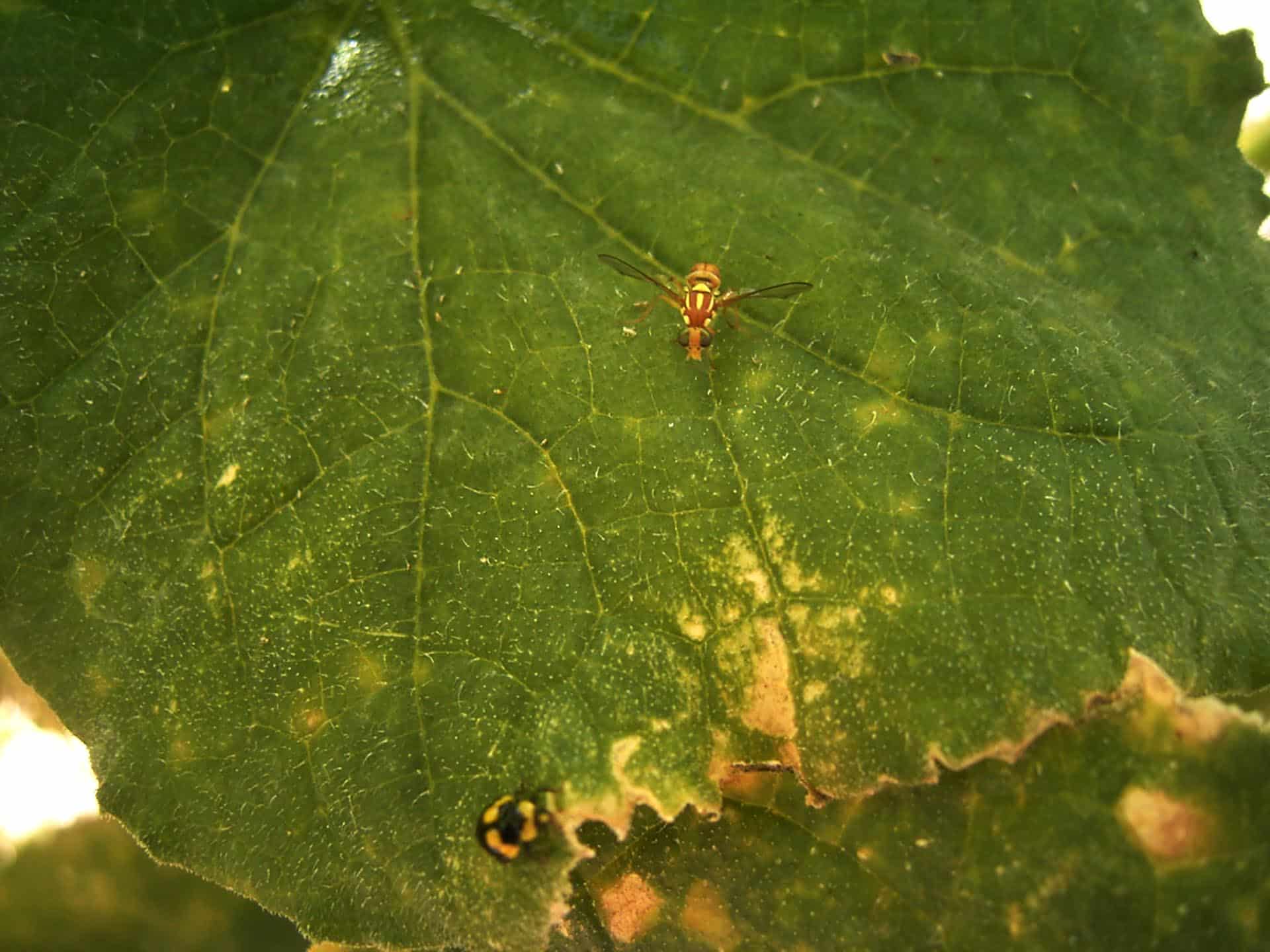Why they are a Pest
It is a pest of cucurbits (cucumber, pumpkin, marrows, zucchini) as well as tomatoes, papaw, guava, and passion fruit.
The female fly lays her eggs in the fruit. The eggs hatch into maggots that feed on the fruit as they develop, causing it to rot from the inside.
Evidence of fruit having been stung is visible as small brown marks that may be raised lumps.

